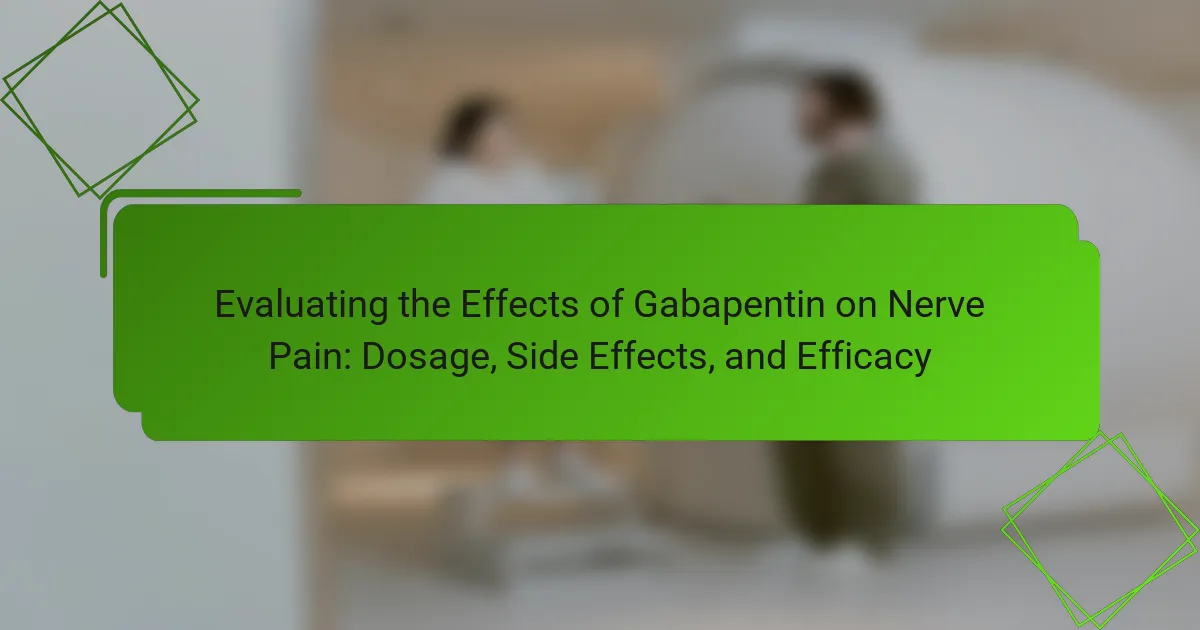What is Gabapentin and its Role in Nerve Pain Management? Gabapentin is a medication primarily used to manage nerve pain. It is classified as an anticonvulsant and works by modulating neurotransmitter release. Gabapentin reduces the sensation of pain by inhibiting excitatory neurotransmitters. This action is particularly effective in conditions like neuropathy and postherpetic neuralgia. Clinical […]

Mindfulness Practices for Pain Relief: Techniques, Benefits, and Session Length
What are Mindfulness Practices for Pain Relief? Mindfulness practices for pain relief involve techniques that focus on awareness and acceptance of present experiences. These practices include meditation, body scanning, and mindful breathing. They help individuals observe their pain without judgment. Research indicates that mindfulness can reduce the perception of pain and improve coping strategies. A […]

Acupuncture methods for alleviating tension and discomfort
What are Acupuncture Methods for Alleviating Tension and Discomfort? Acupuncture methods for alleviating tension and discomfort include various techniques such as needling, electro-acupuncture, and acupressure. Needling involves inserting fine needles into specific points on the body to relieve pain and tension. Electro-acupuncture combines traditional needling with electrical stimulation to enhance the effects of treatment. Acupressure […]

Understanding Chronic Pain: Causes, Symptoms, and Treatment Options
What is Chronic Pain? Chronic pain is a long-lasting pain that persists beyond the usual recovery period. It can last for months or even years. Chronic pain can arise from various conditions, including arthritis, fibromyalgia, or nerve damage. Unlike acute pain, which is a normal response to injury, chronic pain often has no clear cause. […]

Herbal remedies with analgesic properties for chronic pain
What are herbal remedies with analgesic properties for chronic pain? Herbal remedies with analgesic properties for chronic pain include turmeric, ginger, and willow bark. Turmeric contains curcumin, which has anti-inflammatory effects. Studies indicate that curcumin can reduce pain in conditions like arthritis. Ginger is known for its anti-inflammatory properties as well. Research shows that ginger […]

Evaluating the Effectiveness of Cognitive Behavioral Therapy in Pain Management
What is Cognitive Behavioral Therapy and its role in Pain Management? Cognitive Behavioral Therapy (CBT) is a psychological treatment that helps individuals manage their pain. CBT focuses on changing negative thought patterns and behaviors associated with pain. It teaches coping strategies to enhance emotional and physical well-being. Research indicates that CBT can reduce pain intensity […]

Comparing Pharmacological and Non-Pharmacological Approaches to Pain Relief
What are the pharmacological approaches to pain relief? Pharmacological approaches to pain relief include the use of analgesics, anti-inflammatory medications, and adjuvant therapies. Analgesics, such as nonsteroidal anti-inflammatory drugs (NSAIDs) and opioids, are commonly used to manage pain. NSAIDs reduce inflammation and alleviate pain without the risk of addiction. Opioids, while effective for severe pain, […]

Herbal Remedies for Pain Management: Types, Benefits, and Preparation Methods
What are Herbal Remedies for Pain Management? Herbal remedies for pain management include various plants and their extracts used to alleviate discomfort. Common examples are turmeric, ginger, and willow bark. Turmeric contains curcumin, which has anti-inflammatory properties. Ginger is known for its analgesic effects and can reduce muscle pain. Willow bark contains salicin, similar to […]

Massage Therapy for Pain Relief: Techniques, Benefits, and Session Duration
What is Massage Therapy for Pain Relief? Massage therapy for pain relief is a therapeutic practice that involves manipulating the body’s soft tissues. It aims to alleviate pain, reduce tension, and promote relaxation. Techniques used in massage therapy include Swedish, deep tissue, and trigger point therapy. Each technique targets specific areas of discomfort or tension. […]

Sleep strategies for enhancing recovery and reducing pain perception
What are sleep strategies for enhancing recovery and reducing pain perception? Sleep strategies for enhancing recovery and reducing pain perception include maintaining a consistent sleep schedule, creating a comfortable sleep environment, and incorporating relaxation techniques. A consistent sleep schedule helps regulate the body’s internal clock, promoting better sleep quality. A comfortable sleep environment involves a […]
